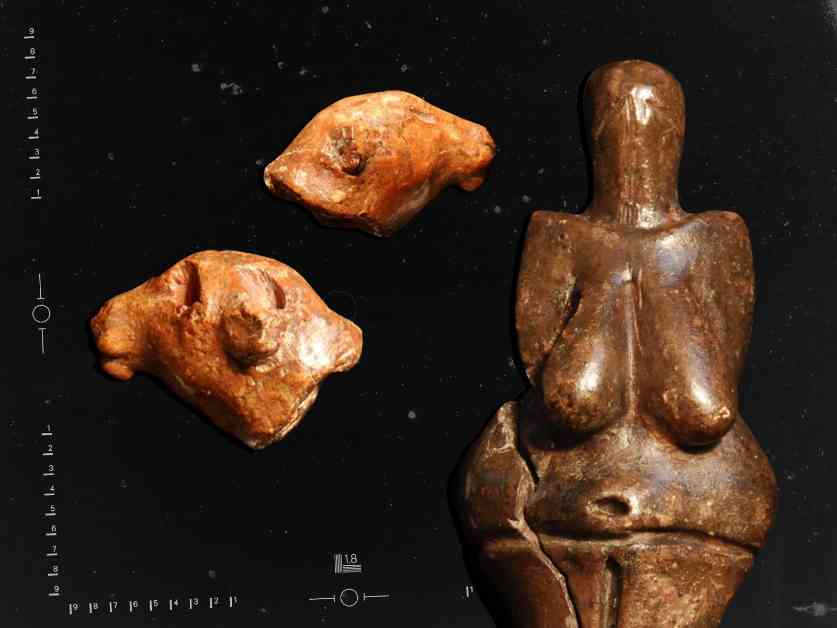Around 30,000 years ago, children in what is now the Czech Republic were likely engaging in a playful activity of making tiny ceramic animals and people from clay. These children would work on these figurines, leaving them unfinished when called away, perhaps for a meal. Some of these objects were later fired in a hearth, while others were left exposed to the elements.
Archaeologists have been studying this ancient form of play and creativity, with a recent paper on the topic under review by PLOS One. The evidence suggests that children were actively involved in the production of ceramics during this period, offering insights into the daily lives of prehistoric communities.
The oldest known ceramics date back to roughly 28,000 B.C.E. in the Czech Republic, with iconic figures like a female figurine discovered at a site called Dolni Vestonice. Additional anthropomorphic and zoomorphic figurines have been found, some of which show evidence of fingerprints, suggesting the involvement of children in their creation.
April Nowell, a paleolithic archaeologist, and co-author of the study, recognized a gap in the understanding of children’s roles in craft production during the Ice Age. Collaborating with expert Becky Farbstein, they conducted a systematic study of ceramic artifacts to identify evidence of novice crafters, potentially children, based on the size and complexity of the objects.
Farbstein’s research highlights the significance of materials used in art production, noting that ceramics made from locally sourced clay likely indicate the involvement of children, who would have easy access to such materials. In contrast, objects made from mammoth ivory, bone, and antler would require more extensive effort to obtain and transport, suggesting adult involvement.
The figurines found near hearths were likely made by children as part of a learning and play process, with some objects fired for preservation or practice. The diversity and inconsistency in the ceramic artifacts compared to other materials further support the idea that children played a significant role in their creation.
This study reflects a shift in archaeological perspectives, emphasizing the importance of studying children and their contributions to prehistoric societies. By understanding how children engaged in activities like ceramics, researchers gain insights into the social dynamics and cultural evolution of ancient communities.
Exploring the role of children in past societies not only enriches our understanding of history but also helps us connect on a more personal level with those who lived before us. By recognizing the influence children had on cultural development and knowledge transfer, we can appreciate the impact of younger generations in shaping human evolution.
As we delve deeper into the archaeological record, uncovering the creativity and playfulness of children in ancient times, we gain a more holistic view of past societies and the intricate dynamics that shaped human history. Through the study of children and their activities, we can imagine the daily lives, interactions, and cultural exchanges that defined prehistoric communities.






